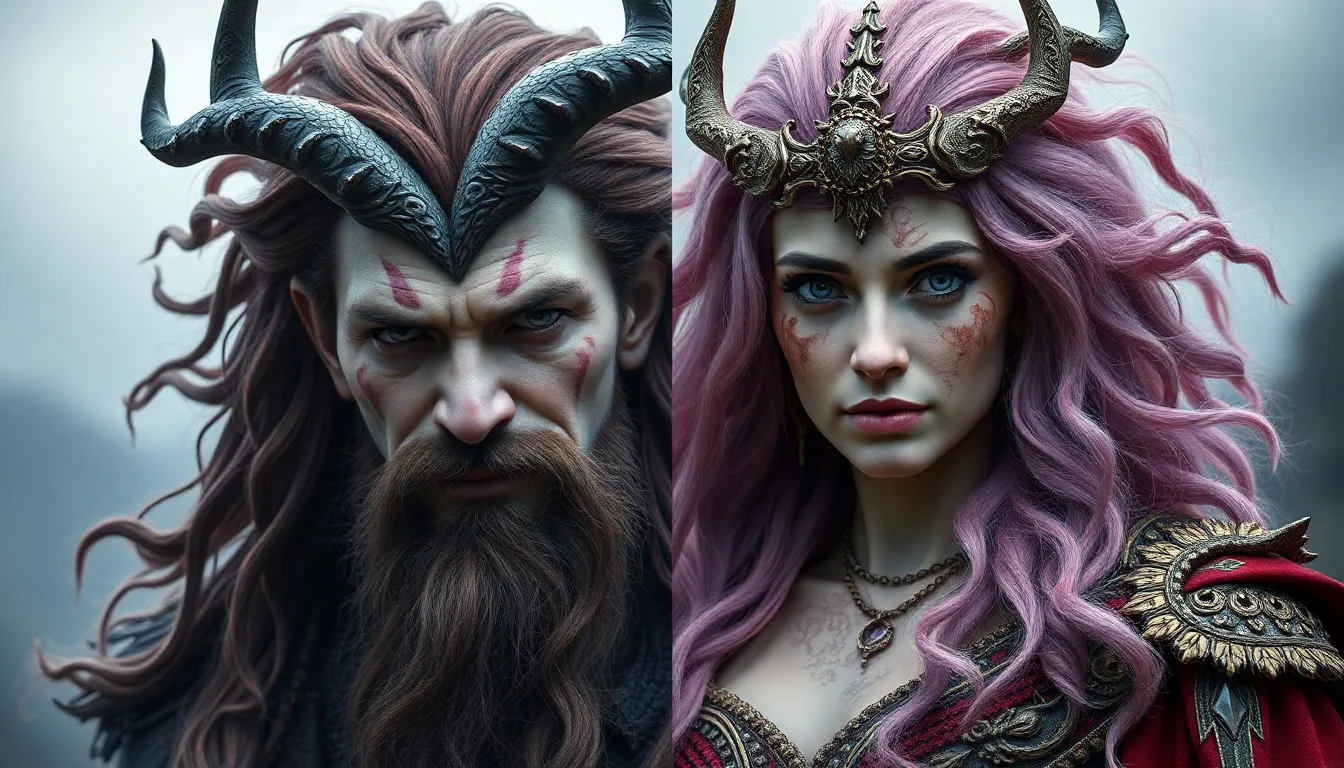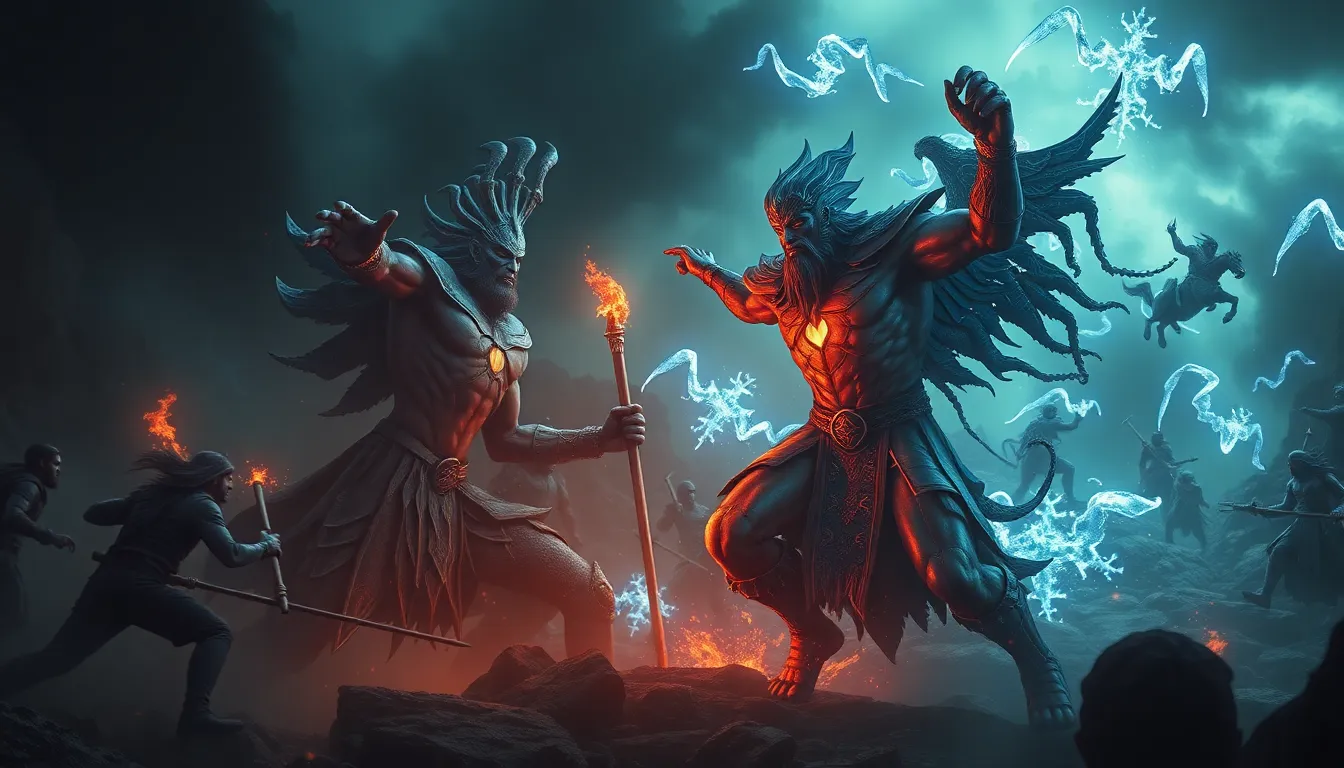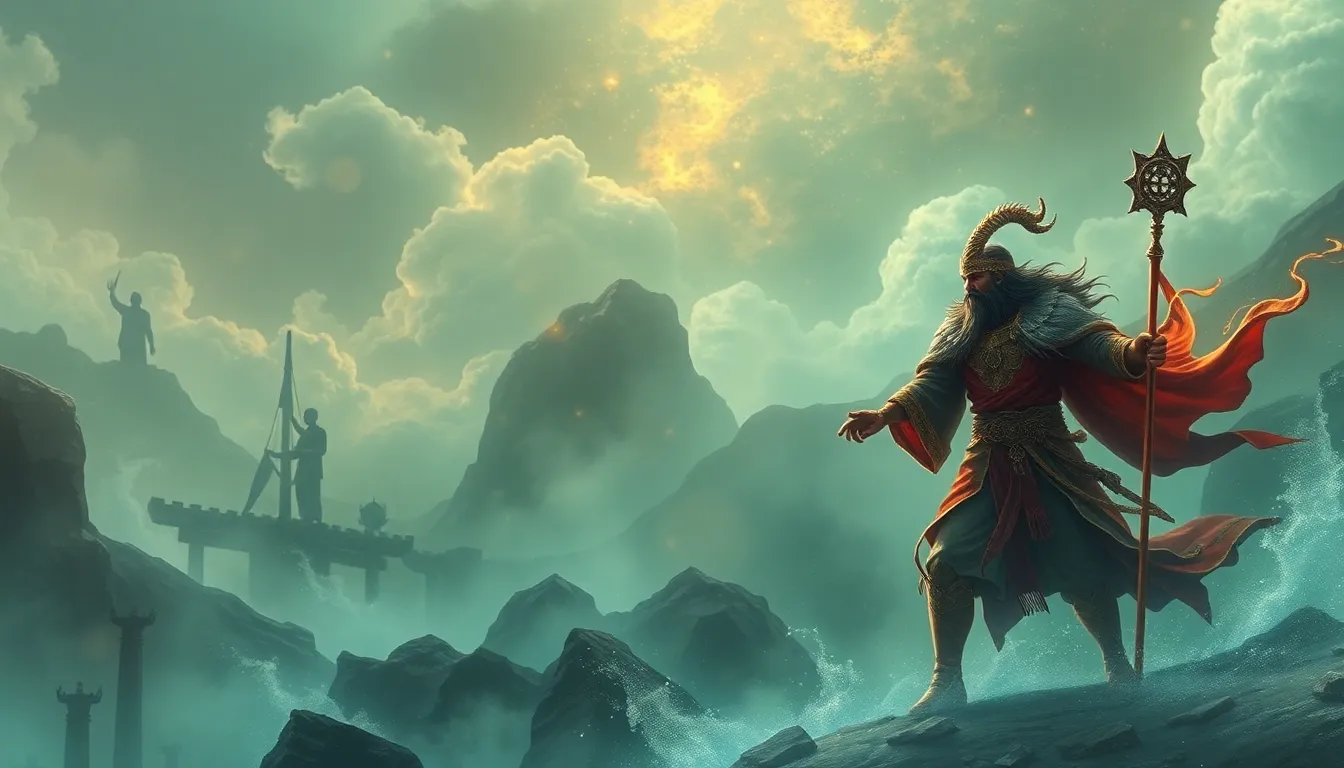Mythic Makeovers: The Most Dramatic Transformations in Folklore
I. Introduction to Mythic Transformations
Folklore and mythology serve as the bedrock of cultural narratives, encapsulating the values, beliefs, and experiences of communities throughout history. These stories often feature elements of the fantastical, with transformation being a recurrent theme that signifies profound changes in identity, morality, and existence.
The importance of transformation in mythological narratives cannot be overstated. It serves as a catalyst for character development, plot progression, and thematic depth. This article will delve into some of the most dramatic makeovers found within folklore, exploring their meanings and implications.
II. The Concept of Transformation in Folklore
Transformation in folklore typically embodies psychological and symbolic meanings, representing personal growth, redemption, or the duality of human nature. For many cultures, transformations reflect the struggle between the mundane and the extraordinary, the earthly and the divine.
Common themes in transformative folklore include:
- Redemption and renewal
- Identity and self-discovery
- The conflict between good and evil
The cultural significance of metamorphosis varies across societies. In some traditions, it is viewed as a rite of passage, while in others, it serves as a cautionary tale about the consequences of hubris or moral failure.
III. Iconic Transformations in Ancient Mythology
Many ancient myths are centered around transformations that not only redefine characters but also alter the landscape of the narratives in which they exist.
A. Greek myths: From mortals to gods
In Greek mythology, many mortals undergo dramatic transformations into gods or divine beings. For example, Dionysus, the god of wine, was born from the mortal Semele but was transformed into a deity through trials and tribulations. Similarly, Persephone’s descent into the underworld and subsequent return signifies the cyclical nature of life and death.
B. Norse tales: The shape-shifting Loki
Loki, the trickster god of Norse mythology, is renowned for his shape-shifting abilities. He transforms into various creatures, including a mare and a salmon, reflecting themes of deception and the fluidity of identity.
C. Egyptian mythology: The rebirth of Osiris
In Egyptian mythology, Osiris undergoes a transformation after being murdered by his brother Set. Resurrected by his wife Isis, Osiris embodies the themes of death and rebirth, symbolizing the eternal cycle of life.
IV. Folklore’s Enchanted Beasts: Animal Transformations
Animals often play a significant role in folklore, and their transformations can convey powerful messages about human behavior and morality.
A. The role of animals in folklore and their transformations
Animal transformations serve as metaphors for human experiences, illustrating the connections between humans and the natural world.
B. Examples: The Frog Prince and Beauty and the Beast
In “The Frog Prince,” a cursed prince transforms back into his human form through love’s true kiss, demonstrating the power of compassion and acceptance. Similarly, in “Beauty and the Beast,” the Beast’s transformation into a prince signifies the importance of inner beauty and redemption.
C. Lessons learned from animal-to-human transformations
These narratives often convey lessons about empathy, understanding, and the potential for change, encouraging audiences to look beyond appearances.
V. Gender and Identity: Transformative Narratives
Transformations in folklore frequently explore themes of gender and identity, offering rich narratives that challenge traditional norms.
A. Gender fluidity in folklore
Many cultures feature deities or characters that exhibit gender fluidity, such as the Native American Two-Spirit people or the Japanese shamanic figures known as “itako.”
B. The significance of female transformations
Female characters often undergo significant transformations, such as mermaids and swan maidens, who grapple with their identities and societal roles. These tales highlight the complexities of femininity and empowerment.
C. Case studies: Mulan and the female warrior archetype
Mulan’s transformation from a dutiful daughter to a fierce warrior challenges gender roles, illustrating the themes of bravery, honor, and personal sacrifice.
VI. Cultural Variations in Transformation Tales
Transformation tales vary significantly across cultures, each offering unique perspectives and insights.
A. Asian folklore
In Japanese folklore, stories like that of the “Tanuki” highlight the transformative powers of animals, often emphasizing the trickster archetype. Similarly, Chinese mythology features tales of fox spirits who can transform into beautiful women, exploring themes of seduction and deception.
B. African folklore
In African folklore, Anansi the spider is a cunning figure known for his clever transformations. His tales often convey moral lessons about intelligence and resourcefulness.
C. Indigenous stories
For many Indigenous cultures, shape-shifting is an essential aspect of spirituality. In Native American folklore, beings like Coyote can transform into various forms, emphasizing the fluidity of existence and the interconnectedness of all life.
VII. The Role of Magic in Transformative Folklore
Magic plays a crucial role in transformation narratives, serving as the impetus for change and growth.
A. Magical objects and their transformative powers
Magical items, such as wands, potions, and enchanted objects, often facilitate transformations in folklore. These items symbolize the potential for change and the power of the supernatural.
B. The influence of witches and sorcerers
Witches and sorcerers frequently appear in transformation tales, wielding their magic to alter the fates of characters. Their roles often reflect societal views on power and femininity.
C. Case studies: The role of magic in Cinderella and Snow White
In “Cinderella,” a fairy godmother’s magic transforms Cinderella’s life, while in “Snow White,” the queen’s dark magic leads to transformation with dire consequences. These tales illustrate the duality of magic as both a tool for empowerment and a source of danger.
VIII. Modern Interpretations of Mythic Transformations
Contemporary adaptations of mythic transformations offer fresh perspectives on traditional narratives.
A. Adaptations in literature and film
Modern retellings, such as Disney’s interpretations of classic tales, often emphasize themes of love, acceptance, and self-discovery. These adaptations reshape original myths for new audiences.
B. The impact of contemporary culture
Contemporary culture influences how transformation tales are told, often reflecting current societal issues such as identity, gender, and diversity.
C. Analysis of how modern narratives reflect or reshape original myths
By reinterpreting these stories, modern narratives challenge traditional views and provide a platform for marginalized voices, creating a dialogue between past and present.
IX. Psychological and Philosophical Implications of Transformations
The transformative narratives found in folklore carry profound psychological and philosophical implications. They prompt us to consider questions of identity, change, and the human experience.
Transformations can symbolize personal growth, the struggle for self-acceptance, or the quest for meaning in a complex world. By examining these narratives, we gain insight into the universal human condition and the myriad ways in which we navigate the challenges of life.
In conclusion, the theme of transformation in folklore is rich and multifaceted, offering a window into the human psyche and cultural values. Through these mythic makeovers, we can explore the depths of human experience, the fluidity of identity, and the power of change.



